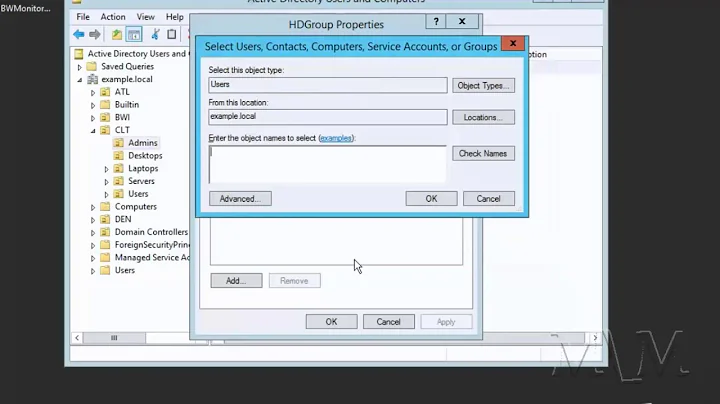Adding a user to the local Administrator group using powershell
Solution 1
This is the Advanced Function That I use to add a users to the local Administrator group using Powershell on several computers.
Usage: Get-Content C:\Computers.txt | Set-LocalAdminGroupMembership -Account 'YourAccount'
Function Global:Set-LocalAdminGroupMembership
{
<#
.Synopsis
.Description
.Parameter $ComputerName,
.Example
PS> Set-LocalAdminGroupMembership -ComputerName $ComputerName -Account 'YourAccount'
.Link
about_functions
about_functions_advanced
about_functions_advanced_methods
about_functions_advanced_parameters
.Notes
NAME: Set-LocalAdminGroupMembership
AUTHOR: Innotask.com\dmiller
LASTEDIT: 2/4/2010 2:30:05 PM
#Requires -Version 2.0
#>
[CmdletBinding()]
param(
[Parameter(Position=0, ValueFromPipeline=$true)]
$ComputerName = '.',
[Parameter(Position=1, Mandatory=$true)]
$Account
)
Process
{
if($ComputerName -eq '.'){$ComputerName = (get-WmiObject win32_computersystem).Name}
$ComputerName = $ComputerName.ToUpper()
$Domain = $env:USERDNSDOMAIN
if($Domain){
$adsi = [ADSI]"WinNT://$ComputerName/administrators,group"
$adsi.add("WinNT://$Domain/$Account,group")
}else{
Write-Host "Not connected to a domain." -foregroundcolor "red"
}
}# Process
}# Set-LocalAdminGroupMembership
Solution 2
On Server 2016 and Windows 10 Version 1607 and later you can use the new PowerShell local user cmdlets:
Add-LocalGroupMember -Group Administrators -Member username
This was added in Windows Management Framework (WMF) 5.1.
The Microsoft.PowerShell.LocalAccounts module works fine on 2012 R2 if you just copy the files into a $env:PsModulePath location.
Solution 3
Here is a simple 2 line script that performs this function
$group = [ADSI]("WinNT://"+$env:COMPUTERNAME+"/administrators,group")
$group.add("WinNT://$env:USERDOMAIN/usernameiwantoadd,user")
For more information see Hey, Scripting Guy! How Can I Use Windows PowerShell to Add a Domain User to a Local Group?
So there are a couple of notes. In the first line I used string concatenation, I didn't have to (see the next line) but I like to because it helps accentuate the variables I am using. Second, these lines will add a domain user, if you wanted to add a local user just remove $env:USERDOMAIN/
Solution 4
Simple Step to add a domain user to the Administrators group:
Add-LocalGroupMember -Group Administrators -Member $env:USERDOMAIN\<username>
Note: Make sure you run PowerShell "As Administrator".
Related videos on Youtube
Comments
-
Eli Ganem over 1 year
I would like to use PowerShell to add a specific user to the local administrator group on a machine. I would be running the PowerShell script in the context of a user that has Administration rights on the local machine.
-
Eli Ganem about 14 yearsI would like to run this script on workstations in such a way that the person running the script can type in a username. Hence the Read-Host
-
raja about 14 yearsso in that case make the first line $userInput = Read-Host "Enter username to add to the local admin group" then use $userinput where is says usernameiwantoadd
-
 Panki almost 5 yearsBe careful, the group "Administrators" might be called different depending on your locale, on a German system it is "Administratoren".
Panki almost 5 yearsBe careful, the group "Administrators" might be called different depending on your locale, on a German system it is "Administratoren". -
 KERR about 4 yearsYou can also add an AD group this way, eg: Add-LocalGroupMember -Group Administrators -Member "CONTOSO\Domain Admins"
KERR about 4 yearsYou can also add an AD group this way, eg: Add-LocalGroupMember -Group Administrators -Member "CONTOSO\Domain Admins"




